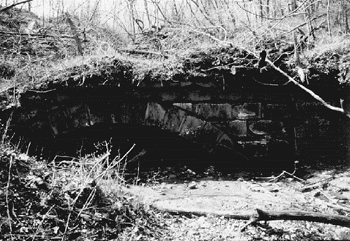The June 1997 issue of The Indiana Historian--Canal Mania in Indiana--focused on the economic effects of canals and what it was like to travel on a canal. This issue focuses on the people and processes which enabled canals to be constructed.
On page 3, there is an overview of the broader context for canal building.
The issue then proceeds to introduce steps in the construction process. Each part uses words and documents generated by participants in those activities in Indiana.
Surveying, on pages 4-5, is represented by John Peter Paul, a surveyor on the Wabash and Erie Canal.
The role of the engineer, on pages 6-7, is demonstrated by Myron S. Webb, an assistant engineer on the Whitewater Canal.
To carry out engineers' plans, contractors were hired. Contractors in turn hired the many laborers who performed the work. On pages 8-9, primary sources are used to indicate the complex elements of this process.
The reminiscence of John T. Campbell on page 10 provides some insight into the working conditions for common laborers.
On pages 11-13, elements of the actual construction of canals are defined and illustrated. The Whitewater Canal is the example for this discussion. Included are definitions from an 1840 book by H. S. Tanner.
On page 14, "Behind the scenes" considers the sources available for this issue and reemphasizes the need for a comprehensive study of canals in Indiana.
"Selected resources" on page 15 provides the usual bibliography and other sources for readers, and some special thank-yous.
The issue closes with a salute to the North Bend tunnel of the Cincinnati and Whitewater Canal. (See below)

A 1995 photograph of the North Bend Tunnel near Cleves, Ohio showing it partially filled with soil. The tunnel, designed by Darius Lapham, was part of the Cincinnati-Whitewater Canal, built between 1838 and 1843 and connecting the Whitewater Canal at West Harrison, Indiana to downtown Cincinnati. "The tunnel, over 1600 feet in length, was 24 feet wide at the water line and the center of the arch was 15 1/2 feet above the water." To get through the tunnel, "horses were unhitched and led around . . . the hill. The canal boats were pulled . . . by hand to hand pull on a rope fastened at each end of the tunnel." Marjorie Byrnside Burress, It Happened 'round North Bend: A History of Miami Township and Its Borders ([Cincinnati], 1970).
Image: Martha Wright
In January 1850, a young man named John Towner headed west from Brookville, Indiana to the gold fields of California. The first leg of the journey was by boat on the Whitewater Canal to Cincinnati. The following excerpt from his journal provides a vivid description of the North Bend tunnel.
. . . we soon arrived at the entrance of the tunnel. This subterranean passage is, to the best of my belief, about a quarter of a mile in length, being dug through a large hill. It is a damp and gloomy place and is not calculated to produce very pleasant sensations; in many places the water drips through from above to such an extent as to resemble a shower of rain. There were ropes fastened overhead, by which means boats were pulled through. I remained on deck during our entire passage through this gloomy place having determined to see everything which was to be seen.
Source: Journal of John Towner, Indiana State Library, Indiana Division.
